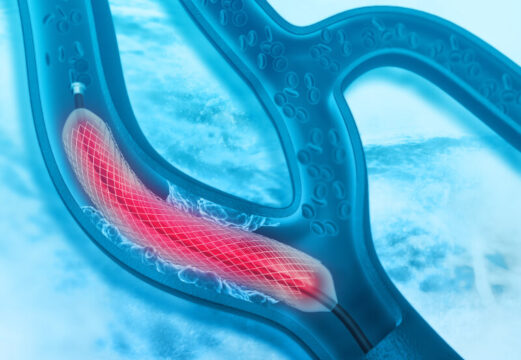Infiltrative diseases (ID) consist of a heterogeneous series of genetic conditions that cause infiltration and extracellular deposits which alter the diverse systems and organs affected.

Amyloidosis, sarcoidosis and hemochromatosis affect the heart, altering the myocardium and the conduction system.
PCI is often used at present to treat heart disease, and some of these patients present ID. Different analysis suggest that PCI might evolve differently vs. patients with no ID; however, it has not yet been thoroughly looked into.
There was a retrospective analysis, from January 2016 to December 2020, including 2,360,860 patients; 7,855 (0.77%) with ID (amyloidosis 990, sarcoidosis 5,260 and hemochromatosis 1,625).
Read also: TAVR in Low Risk Patients: 10 Year Evolution.
Primary end point was the post-PCI combination of inhospital death, stroke and major bleeding.
Patients with amyloidosis were older and had more comorbidities vs. sarcoidosis and hemochromatosis patients.
Primary end point resulted more frequent in amyloidosis patients (1.6% vs. 1.1% vs. 1.18%, OR 1.6; CI del 95%, 1.1-2.44; P= .02 for amyloidosis, sarcoidosis and hemochromatosis, respectively); they also showed higher mortality (1.9% vs. 1.09% vs. 0.72%, P<0.05), and stroke (4% vs. 0% vs. 2.28%, P<0.05), but there were no significant differences in major bleeding (2.2% vs. 0.96% vs. 1.03%, p>0.05).
The cost of hospitalization and hospital stay was higher in patients with amyloidosis.
Conclusion
Amyloidosis was associated with worse evolution after PCI, including higher inhospital mortality, intra and post procedural stroke, and socioeconomic cost. We highlight the need for a multidisciplinary approach for better assessment and further research, to better guide the screening and management strategy of these patients.

Dr. Carlos Fava.
Member of the Editorial Board of SOLACI.org.
Original Title: Clinical Outcomes of Percutaneous Coronary Intervention in Amyloidosis, Sarcoidosis, and Hemochromatosis.
Reference: Bilal Hussain, et al. JSCAIhttps://doi.org/10.1016/j.jscai.2023.101267. Article in press.
Subscribe to our weekly newsletter
Get the latest scientific articles on interventional cardiology





